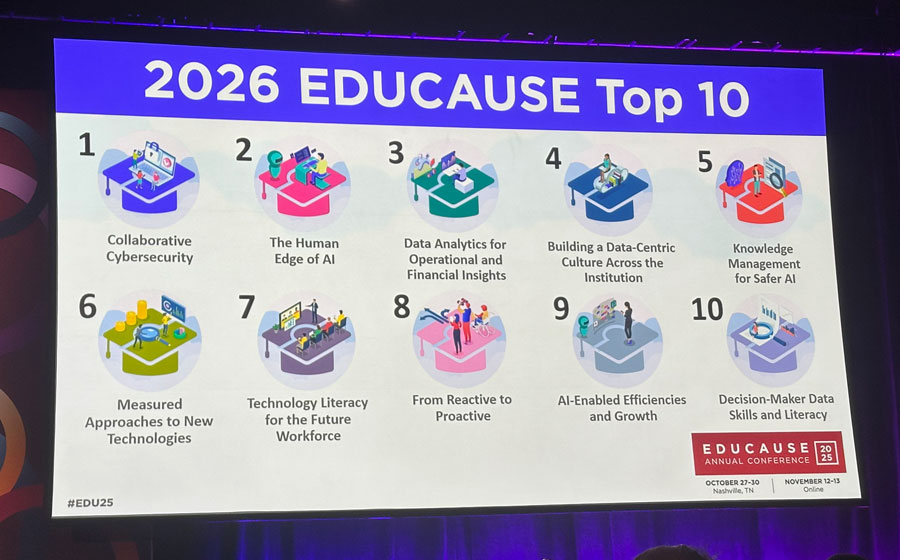Educause Releases the Top 10 Report Predicting Where Higher Ed Will Be in 2026
- Educause has released its Top 10 report predicting where higher education will be in 2026, highlighting key trends and technologies that institutions should focus on.
- The top priorities include building a cybersecurity culture, leveraging data analytics for operational insights, and integrating knowledge management into AI governance programs.
- Other key areas of focus include technology literacy for the future workforce, using data for scenario modeling and forecasting, and enhancing decision-maker data skills and literacy.
- The report aims to provide guidance for institutions to move forward, particularly in addressing tensions around free speech, ideological differences, and financial stability.
- The Top 10 report is presented by Dr. Crista Copp and Dr. Mark McCormack, highlighting the importance of human connection and collaboration in navigating the future of higher education.
IBL News | Nashville, Tennessee
Educause yesterday released its Top 10 list of where higher education is headed in 2026 during the second day of its annual conference, which gathered around 7,500 educational professionals on October 28 -30 in Nashville, Tennessee.
“Tensions around free speech and ideological differences in the classroom are leaving leaders and faculty uncertain about their future in academia. And the financial stability of many institutions, and of Minority Serving Institutions (MSIs) in particular, is increasingly strained by reductions in federal support,” said Educause. “We must find ways to cultivate human connection, both within ourselves and with one another.”
Traditionally, the Top 10 report, which highlights how technology leaders are thinking about and planning, serves as a guide for institutions to move forward.
This year, the Top 10 was presented by Dr. Crista Copp, Vice President of Research at Educause, and Dr. Mark McCormack, Senior Director of Analytics & Research.
- #1. Collaborative Cybersecurity: Building a cybersecurity culture of shared responsibility, end-user awareness and training, and improved access to security services and supports
- #2. The Human Edge of AI: Empowering students, faculty, and staff to engage with artificial intelligence tools critically, creatively, and safely
- #3. Data Analytics for Operational and Financial Insights: Leveraging data analytics to provide insights into spending patterns, enrollment trends, and areas for cost savings and operational efficiencies
- #4. Building a Data-Centric Culture Across the Institution: Expanding and improving data access and unlocking the full potential of data as a strategic asset
- #5. Knowledge Management for Safer AI: Mitigating the risks of artificial intelligence by integrating knowledge management into data governance, privacy, and ethics programs
- #6. Measured Approaches to New Technologies: Making better technology investment decisions (or choosing not to invest) through clear cost, ROI, and legacy systems assessments
- #7. Technology Literacy for the Future Workforce: Supporting discipline-specific technology training and education to enhance student success with in-demand technology skills
- #8. From Reactive to Proactive: Using data for scenario modeling, forecasting, and prediction to strengthen institutional agility and planning
- #9. AI-Enabled Efficiencies and Growth: Using artificial intelligence, robotic process automation, and other analytics capabilities to reduce operational costs, streamline processes, and improve strategic and business decision-making
- #10. Decision-Maker Data Skills and Literacy: Enhancing the value of institutional data by training and equipping decision-makers to use and interpret it properly

